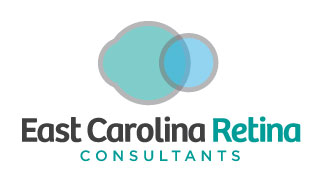New Treatment for Macular holes
Recent approval of Jetrea (Ocriplasmin) to treat symptomatic VMA (Vitreo Macular Adhesion) has opened up a new era in non surgical management of macular holes. Previously only a hospital based surgery was able to reverse the process of macular hole development but now a new drug can be injected into the eye painlessly in the office and within a few weeks the process reverses back to more normal vision levels.... more
FDA Approves ASRS Leader's ArgusŪ II Artificial Retina
On February 14, the FDA approved the Argus II artificial retina developed by ASRS Executive Committee and Board Member Mark S. Humayun, MD, PhD.
This breakthrough technology is the first ever to offer limited vision to patients with late-stage retinitis pigmentosa (RP).
Second Sight Medical Products (Sylmar, CA) manufactures the Argus II implant, which has 60 electrodes and a tiny camera mounted on eyeglasses to capture images.
The FDA approved Argus II for adults age 25 years or older with severe to profound RP. About 10,000 to 15,000 of the 100,000 Americans with RP will qualify for Argus II. Up to 4,000 patients a year can be treated with the device.
Macular degeneration and Aspirin?

Aspirin and Macular degeneration... is there an increase in the wet form of macular degeneration in those patients taking aspirin? The wet form develops quicker than the dry form. It may only be related to the fact that you are more likely to take aspirin if you have medical problems like stroke or heart attacks in the past and these conditions are more commonly associated with wet age related macular degeneration. ... more

Diagnostic Imaging
Overview:
Diagnostic imaging afforded at East Carolina Retina is state-of-the-art. In the mid-1990s, Dr. Van Houten developed his own advanced imaging system out of the desire to detect underlying retinal problems before a patient even experienced complications. This commitment to early detection has not wavered; and the practice continues to update imaging technology as it become available.
Process:
Diagnostic imaging typically takes place throughout the treatment process, from initial diagnosis through determining the effectiveness of disease management and surgical procedures.
The latest edition to our advanced imaging devices is a Spectralis imaging machine developed by Heidelberg Engineering. The Spectralis not only affords Dr. Van Houten complete views of the vitreous and retina, it gives him the ability to examine the back of the eye using six different imaging modes to allow for a full-spectrum evaluation of any given condition. Precision tracking by the machine enables your physician to more readily identify small changes within the retina as well as ensure that he is examining the same area each time images are taken for careful follow up exams. Taking the photos is much easier on the patient as both fluorescein and indocyanine photos are taken at the same time. The single image contains both types of data, information on the superficial blood vessels as well as the deeper layer of blood vessels of the retina. This technology also shows a three dimensional cube of data showing the complicated relationships of the retina.
Other imaging modalities include infrared scanning, autofluorescence images, red free images. These all show different views of the diseases that affect the retina. The optical coherence tomograph (OCT) actually scans the retina in three dimensions and is extremely accurate and repeatable allowing good followup on problems over time.
Benefits:
- Advanced technology allows for diagnostic images taken through six different modes
- Small changes can be easily identified with precision tracking
- More accurate diagnosis can be made
- Better outcomes for any given treatment






